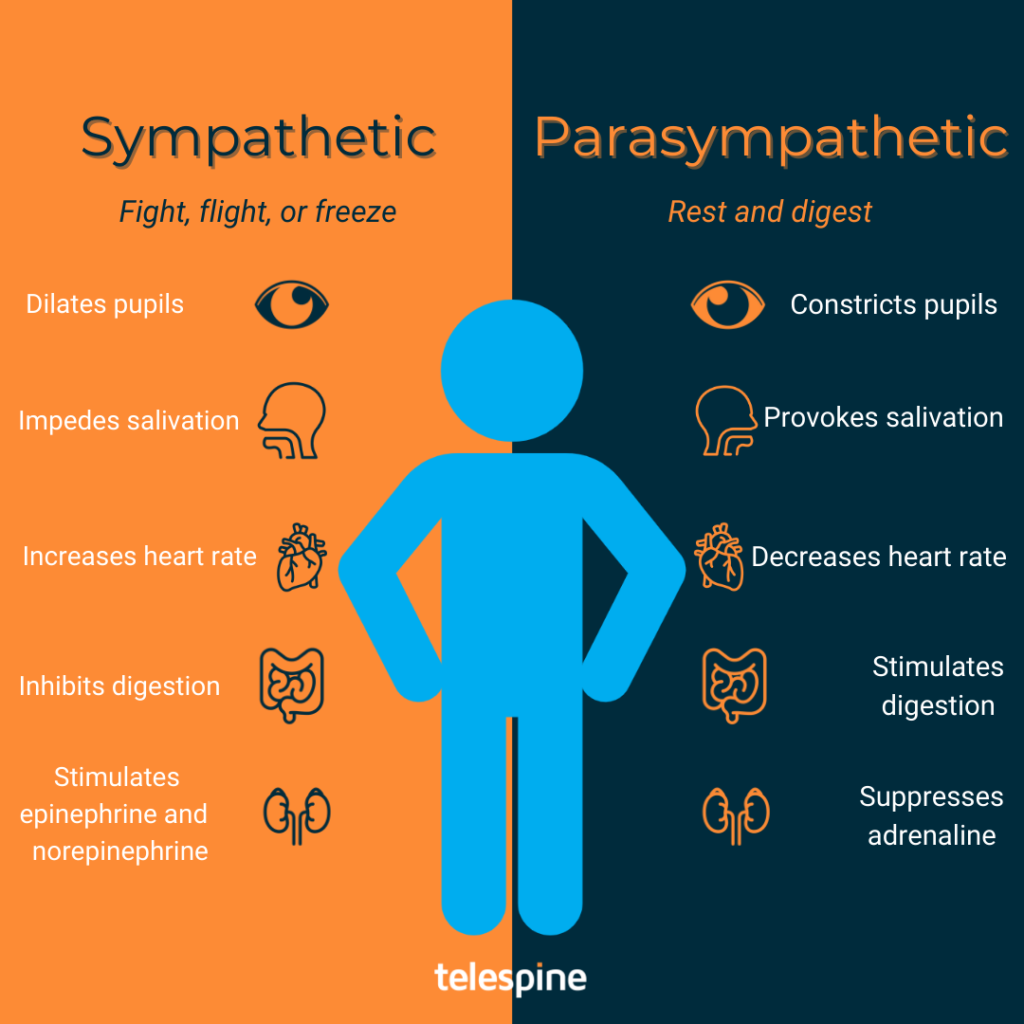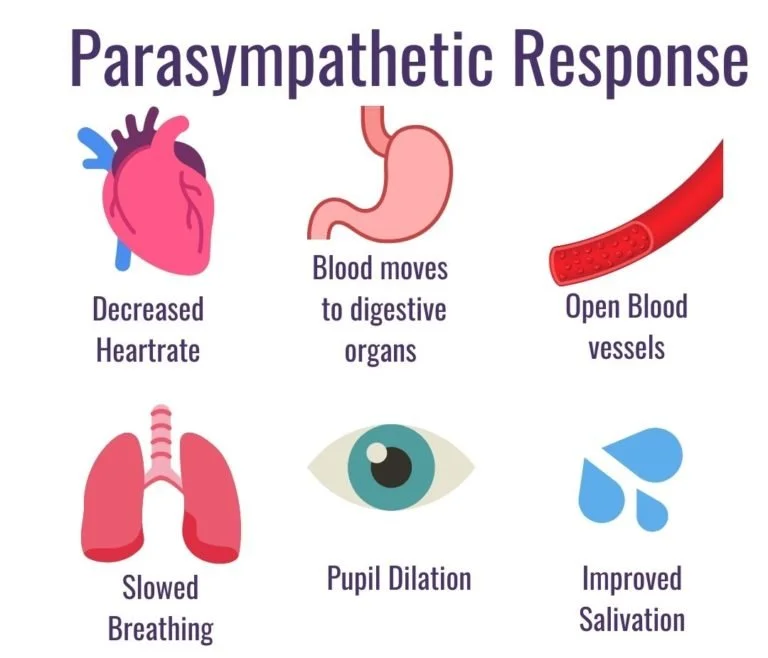The Vagus Nerve and Yoga
What is the Vagus Nerve?
The vagus nerve, also known as the “wandering nerve,” is the longest cranial nerve in our body. It originates in the brainstem and travels down to various organs, including the heart, lungs, digestive system, and even the voice box.
This nerve is responsible for regulating a wide range of functions such as heart rate, blood pressure, digestion, and even mood. When the nerve is stimulated, it can lead to a state of calmness, increased overall well-being, and improved physical health. connecting the brain to the major vital organs
What role does it play?
The vagus nerve plays a pivotal role in our parasympathetic nervous system (PNS). The PNS promotes relaxation, rest, and digestion.
Within our bodies, this nerve acts as a communication bridge between the brain and various organs. It transmits signals to and from the brain, like a super highway. It connects the brain to the major organs. This connection allows for efficient regulation of bodily functions and helps maintain homeostasis.
The impact of the vagus nerve on the heart is particularly significant. It regulates heart rate variability. This is the change in the time interval between consecutive heartbeats. Optimal heart rate variability is associated with better cardiovascular health, reduced stress levels, and improved overall well-being.
Beyond the heart, this nerve also influences digestion. It helps regulate the production of stomach acid, controls the movement of food through the intestines, and even influences gut bacteria. Proper vagal stimulation can improve digestion and alleviate symptoms related to disorders such as irritable bowel syndrome (IBS) and acid reflux.
In addition to these key functions, the nerve also:
Helps to control the rate and depth of breath.
Monitors blood pressure
Influences immune response
Communicates information from the gut to the brain
What is vagal tone and why is it important?
The “tone” of our vagus nerve is fundamental when it comes to our overall health and well-being. Vagal tone is an internal biological process that represents the nerve activity. Increasing or stimulating the activity, or vagal tone, helps activate the PNS and allows you to return to a relaxed state after stressful experiences.
The activity is directly related to experiencing positive emotions. The higher your vagal tone, the healthier your mind and body can be.
How do you stimulate it?
There are many practical things you can do to increase your vagal tone, such as cold exposure, meditation, deep belly breathing, exercise, and yoga.
Recent studies have shown that certain yoga poses can specifically target the vagus nerve, providing a powerful yet gentle way to stimulate and optimize its function. Through a combination of gentle movements, breath control, and mindfulness, yoga poses can activate and strengthen the nerve, leading to improved well-being and a sense of tranquillity.
Consistency is key
You aren’t going to be able to have an instant improvement in your vagal tone with just a couple of sun salutations! It’s all about consistency in practice.
Practising regularly yoga can lead to long-term positive effects on mind-body wellness. You’ll start to notice improvements in how you handle stress. Over time, you’ll also see yourself feeling more centred and calmer. You may also recognise that you recover quicker from stressful situations.
These benefits are backed by science and demonstrate how yoga can improve brain function and give us more control of our emotions. It offers yoga practitioners deeper insights to enable more effective trauma recovery and treatment for conditions such as Complex PTSD.
What does regular practice look like?
Regular practice might simply be doing a couple of minutes a day of specific poses and deep belly breathing – it doesn’t have to mean hours and hours of practice every day.
However, it’s not just about striking poses but also about being fully present in each posture and noticing how it feels in your muscles.
One great thing, about yoga that is the most beneficial, is that you don’t need any special equipment. However, having a good quality mat, or support you can find in your home, can enhance your comfort and stability during practice. (Yoga props)
When practising yoga, focus on poses that promote deep relaxation and activate the PNS. Restorative poses such as Child’s Pose, Legs-Up-The-Wall, and Savasana are particularly effective in stimulating the vagus nerve. These poses encourage deep relaxation and help release tension in the body, allowing the nerve to be activated more easily.
In addition, to these restorative poses, downward facing dog, bridge pose, cat-cow, seated forward folds, gentle backbends such as sphynx or supported fish pose and triangle pose can all help to activate the nerve. They promote relaxation, tranquillity and balance.
Pranayama practices that promote calming, and centring are best. For example, deep diaphragmatic breathing, ocean breathing, box breathing, and alternate nostril breathing are good techniques.
In conclusion
It is important to listen to your body and practice self-care. If you’re feeling fatigued or overwhelmed, take a break and permit yourself to rest. Pushing yourself too hard can have the opposite effect and increase stress levels, inhibiting vagus nerve stimulation. Remember, yoga is a practice of self-compassion and self-awareness.
In conclusion, incorporating vagus nerve yoga poses into your regular practice can have a profound impact on your overall well-being. By understanding the connection between the vagus nerve and well-being, harnessing the science behind yoga and nervous system regulation, and consistently practising specific yoga poses, you can experience improvements in both physical health and mental-emotional well-being.







